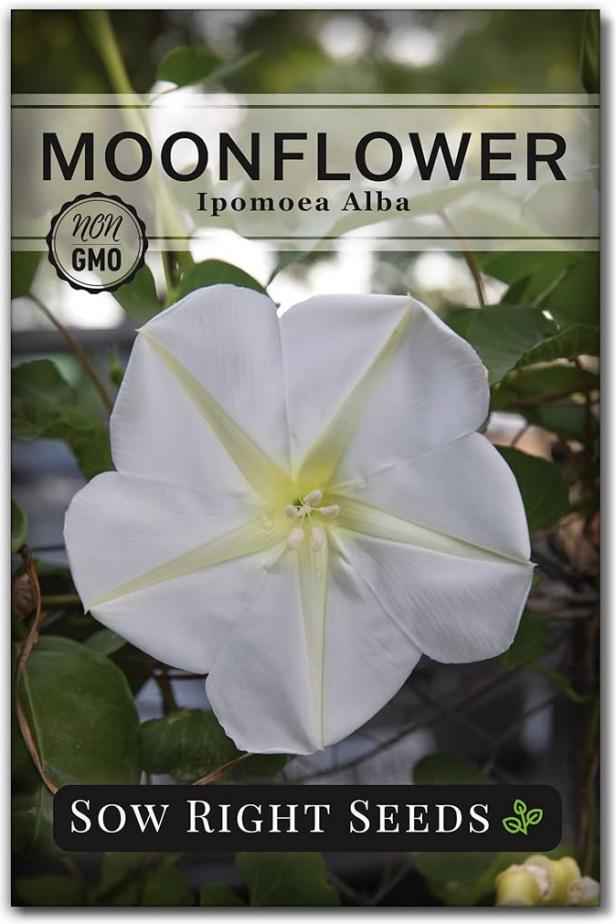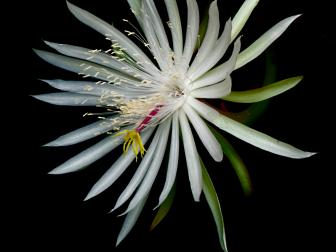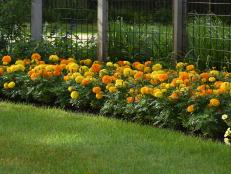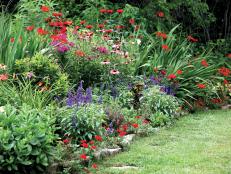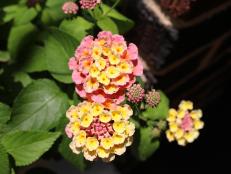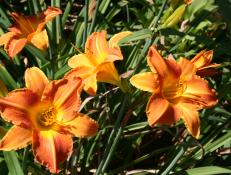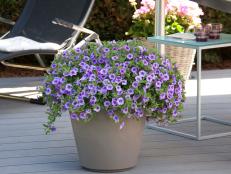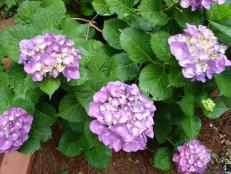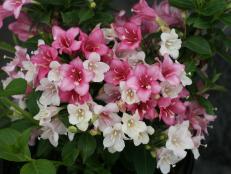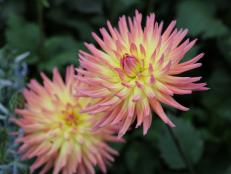Planting and Caring for Moonflowers
Our garden experts offer moonflower planting, growing and care tips for this blooming vine.
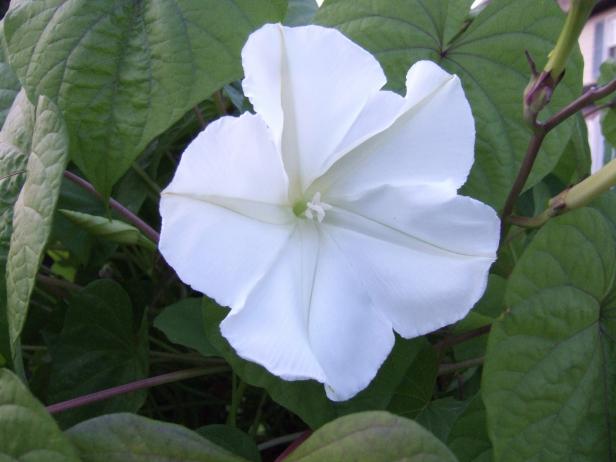
Julie Martens Forney
Moonflower vine is the after-dark cousin to morning glory. This annual vine opens stunning 6-inch-wide white blooms—loaded with fragrance—starting at dusk. On a warm summer’s evening, it’s pure joy to sit on a patio and watch the moonflowers twirl open.

What Is Moonflower?
Moonflowers, with their heart-shaped leaves and nearly iridescent white blooms, are easy-to-grow flowering vines. In subtropical areas, they can be grown as perennials, while gardeners who live where the winters are cold treat them as annuals.
Botanical Name: Ipomoea alba
Common Names: Moonflower, moon vines, white morning glories, evening glories
Hardiness Zone: 10 to 12
Height: Up to 20'
Bloom Size: 3" to 6" across, opening at night.
Moonflower plants (Ipomoea alba), sometimes called moon vines, white morning glories or evening glories, open their flowers in the evening or on cloudy days. The buds look like tightly-furled parasols and open into trumpet-shaped flowers that measure 3 inches to 6 inches across and last one day. Grow the plants near a patio or porch, and you can often smell their sweet fragrance on the night air as they bloom from summer into fall.
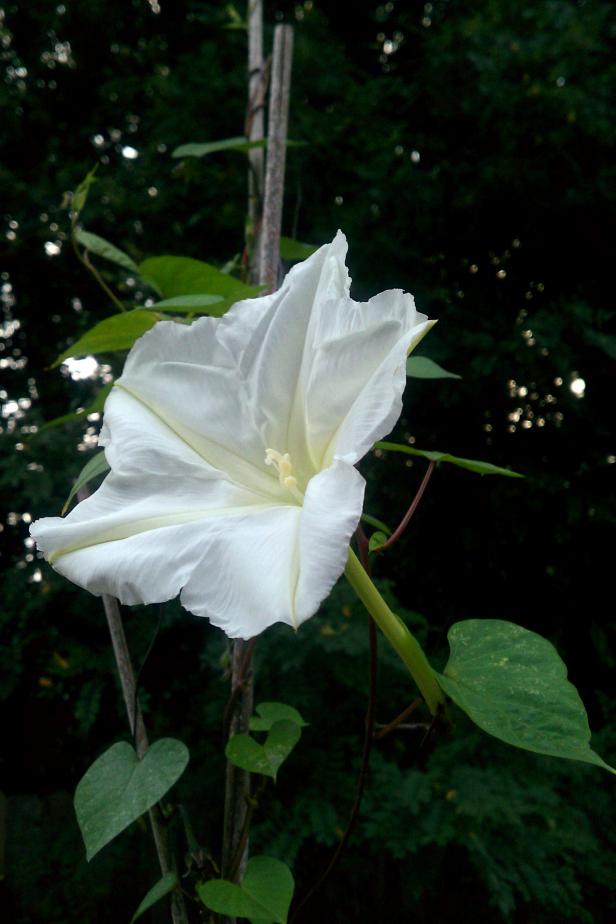
Moonflower blooms last a single night.
Like morning glories, each moonflower blossom lasts a single day (night). This annual vine grows to 20 feet, twining its way around supports.
How to Plant Moonflowers
Stratification
Moonflowers are easy to grow from seeds but to encourage germination, stratify them before planting. Stratification refers to softening a hard seed coat so water can enter and germination can begin. Some gardeners nick the moonflower seed coats with a knife or nail clippers and then soak them overnight in warm water. Others scrape the seed coats with rough sandpaper or a file to open them partially. Still other gardeners simply soak the unopened seeds. Seeds that have been partially nicked or roughed up before soaking usually open in four to 14 days, while seeds that have only been soaked can take 14 to 21 days to germinate.
Planting Directly in the Ground
To plant moonflower seeds directly in the garden, wait until the temperatures are reliably warm, around 60 to 70 degrees. Give them a spot with full sun in loose, well-drained soil. While moonflowers will grow in a variety of soils, even in dry, poor soil, you can work a small amount of compost into the soil. Plant them 1/4" deep and 6 inches apart. When the seedlings are up, thin them to every 12 inches.
Starting Seeds Indoors
If you live in a cold climate and want to give your moonflowers a head start on the growing season, start the seeds indoors in 3-inch peat pots filled with potting soil six to eight weeks before your last spring frost. Cover the seeds loosely with 1/4" of potting soil. Put the pots on a tray in a warm location that gets bright, indirect light and cover them with plastic wrap to raise the humidity. Ideally, the temperature should stay around 75 degrees Fahrenheit. To encourage germination, you may want to use a heating mat made for starting seeds underneath the tray. Keep the top of the soil in the pots moderately moist, but don't overwater, which can cause the seeds to rot.
Move the seedlings outside when all chance of frost has passed. Put them a sheltered spot for about a week so they have time to acclimate to the outside temperatures, wind and sun. Moonflowers dislike having their roots disturbed, so when you move them to their permanent location, plant them while they're still in the peat pots. Their roots will grow through the pots and into the soil. Water regularly until the plants are established and then apply 1 inch of water a week if rainfall is lacking.
Moonflowers don't need fertilizer, which promotes leaf growth but results in fewer blooms.
Grow these twining plants near a fence so their vines can climb, or train them onto a trellis or other support. Moonflowers can be tricky to grow in containers, unless they are very large, because the vines can reach 10' to 20' in length.
All parts of moonflowers, including the seeds, are toxic, so keep children and pets away from them. In some states, various Ipomoea species are considered noxious weeds and may be prohibited.
Moonflowers will grow from dropped seeds, so if you don't want them to come back the following year and/or you live in USDA Hardiness Zones 9 to 11, pick off the faded flowers before they form seeds. In cold-winter regions, moonflowers will not return.
Moonflower Diseases
Black Rot
Black rot is a bacterial disease that can affect moonflowers in warm, humid weather. It appears as yellowish-orange, V-shaped markings on the leaf margins and eventually causes the leaves to fall off. To prevent this disease, don't crowd your plants together and make sure they have good air circulation. Also, avoid working with your plants while they're wet, as the disease can spread easily.
Rust
Rust is a fungus that shows up on moonflowers as reddish-brown spots. Pull up and discard any infected plants (but don't add them to your compost pile, where the fungus can spread).
Stem Canker
Moonflowers with stem canker will have brown or wilting stems or stems with sunken areas. The fungus can spread all over the plant until it dies. Remove and discard any infected stems you see and avoid getting your plants wet when you water.
It's also a good idea to plant your moonflowers in a different location the next time you plant, a practice known as crop rotation, to help avoid diseases.
Moonflower Pests
Aphids
These plant pests suck the juices from moonflowers, leaving a sticky residue that draws ants. If you see these green, red, black or orangish insects, wash them off with a strong spray of water from your garden hose or spray with an insecticidal soap. Introducing natural predators that eat aphids into your garden, such as lady beetles and wasps, can also help.
Japanese Beetles
Known for their metallic green bodies and copperish wing covers, Japanese beetles destroy plants by skeletonizing leaves and buds. Wear garden gloves to pick off these pests and drop them into a bucket of soapy water.
Hornworms
Tomato and tobacco hornworms, the larvae of sphinx or hawk moths, are large enough to see easily. These pests have soft, green bodies with white stripes. Wear gloves to pick them and step on them or drop them into a bucket of soapy water. If you see hornworms with white, rice-sized objects on their backs, leave them alone. They're under attack by the larvae of a parasitic wasp and will die. Do not use Bacillus thuringiensis kurstaki (Btk) on your plants. It's a biological control that kills the larvae of moths and butterflies, but it can kill desirable butterflies.
Leafminers
Leafminers sometimes bore under the surface of moonflower leaves, leaving irregular lines. You may spot them in the larval stage when they look like yellow maggots, or in the adult stage when they look like little yellow and black flies. While they don't usually cause moonflower plants to die, they can ruin their appearance. Cut off infected foliage and discard it.
Spider Mites
Spider mites are usually too small to see but suspect their presence if you notice tiny webs on your plants. Like aphids, they suck plant juices, making leaves turn yellow and dry out. Use a strong spray of water from your garden hose to knock them off or spray with insecticidal soap.
Night-Blooming Flowers 21 Photos
Enjoy your garden 24/7 by planting these beautiful, fragrant flowers that bring new meaning to the term nightlife.
Companion Plants for Moonflowers
Some gardeners like to grow morning glories — which open during the day — with their night-blooming moonflowers. Both belong to the Ipomoea genus and have the same basic needs for full sun and regular water.
Other vines that bloom in summer also make lovely companions. Try cypress vines (I. quamoclit), annuals with bright red flowers and fine-cut foliage that can also grow to 20' in a growing season or Cardinal climber (I. x multifida), another annual with scarlet blooms that grows to 10'.
For an all-white "moon garden" that seems to glow at night, plant star jasmine (Jasminum nitidum), white flowering tobacco (Nicotiana), lamb's ear (Stachys), bacopa, gardenias and other white or very pale flower and foliage plants.






